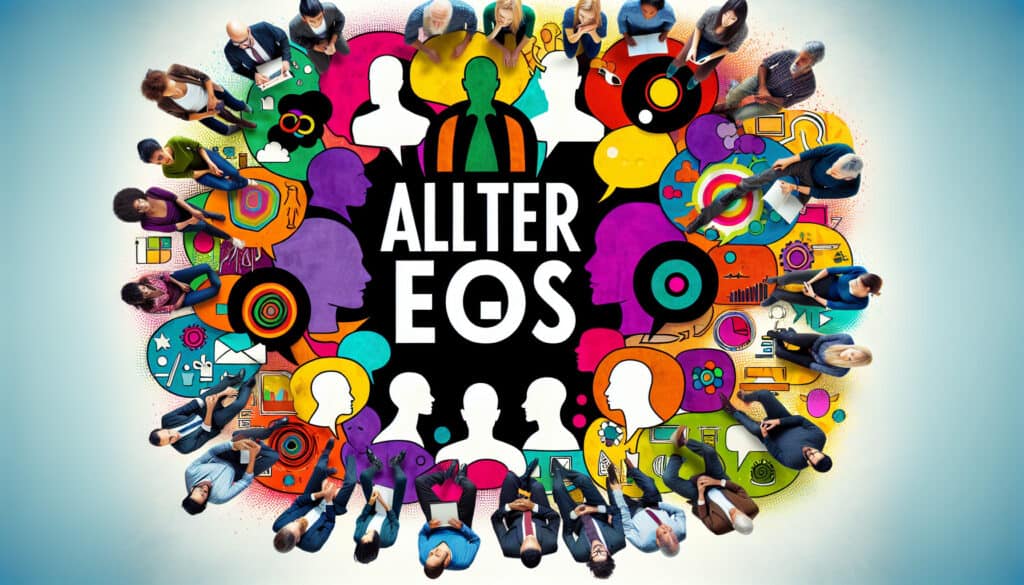A brainstorming technique where participants assume the identity of a different person or persona.
- Methodologies: Customers & Marketing, Economics
Alter-Egos

Alter-Egos
- Agile Methodology, Brainstorming, Creativity, Cross-Functional Collaboration, Design Thinking, Human-Centered Design, Ideation, Innovation, Problem Solving Techniques
Objective:
How it’s used:
- By taking on a different persona, participants can generate ideas from a new perspective, free from their usual constraints and biases.
Pros
- Encourages creative thinking, helps to overcome mental blocks, and can lead to more innovative ideas.
Cons
- Can be difficult for some participants to get into character, may feel unnatural or forced, and may not be suitable for all types of problems.
Categories:
- Ideation, Problem Solving
Best for:
- Generating creative ideas by looking at a problem from a different perspective.
The methodology of Alter-Egos involves participants embodying different personas to inspire fresh thinking and creativity in various contexts, particularly beneficial in product design and innovation. This approach can be applied effectively during the ideation stage of project development, where teams are tasked with solving specific challenges or generating novel concepts. Industries such as consumer electronics, automotive design, and healthcare technology frequently utilize this method to stimulate different viewpoints among their design teams, leading to innovative solutions that break traditional molds. For example, a team tasked with designing a user-friendly medical device might take on the roles of patients, doctors, and caregivers to understand varying experiences and needs, thus generating comprehensive ideas that cater to those they aim to serve. The methodology thrives in collaborative settings, where interaction among diverse group members—including designers, engineers, marketers, and end-users—can lead to richer ideation sessions. Facilitators can initiate this exercise by guiding participants through a structured process of developing their alter egos and encouraging them to articulate thoughts and solutions as these personas, which can unearth unconventional ideas that may not surface in traditional brainstorming. Such a practice not only stimulates creativity but also creates a more empathetic understanding within teams, as they step into the shoes of their end-users or stakeholders, allowing for more targeted and innovative outcomes.
Key steps of this methodology
- Select an alter-ego that embodies different traits or attitudes related to the problem.
- Adopt the mindset and characteristics of the chosen alter-ego completely.
- Engage in brainstorming sessions, generating ideas as if you were that alter-ego.
- Document all ideas without judgment or evaluation.
- Analyze the generated ideas through the lens of the alter-ego's perspective.
- Identify which ideas can be translated back to your original persona for further development.
Pro Tips
- Utilize personas from various domains, such as customer segments or industries, to challenge assumptions and uncover unconventional solutions.
- Encourage participants to physically embody their alter-ego through role-play or storytelling, which can unlock deeper emotional connections to the problem.
- Facilitate a structured dialogue where each persona presents their viewpoints in a debate format, stimulating contrasting ideas and collaborative innovations.
To read and compare several methodologies, we recommend the
> Extensive Methodologies Repository <
together with the 400+ other methodologies.
Your comments on this methodology or additional info are welcome on the comment section below ↓ , so as any engineering-related ideas or links.
Historical Context
1949
1950
1950
1960
1960
1960
1960
1940
1950
1950
1958
1960
1960
1960
1960
(if date is unknown or not relevant, e.g. "fluid mechanics", a rounded estimation of its notable emergence is provided)















Related Posts
Monte Carlo Simulation
Model-Based Testing
Model Checking
Mixed Methods Research
Mistake Proofing (Poka-Yoke)
Mission Profile Testing